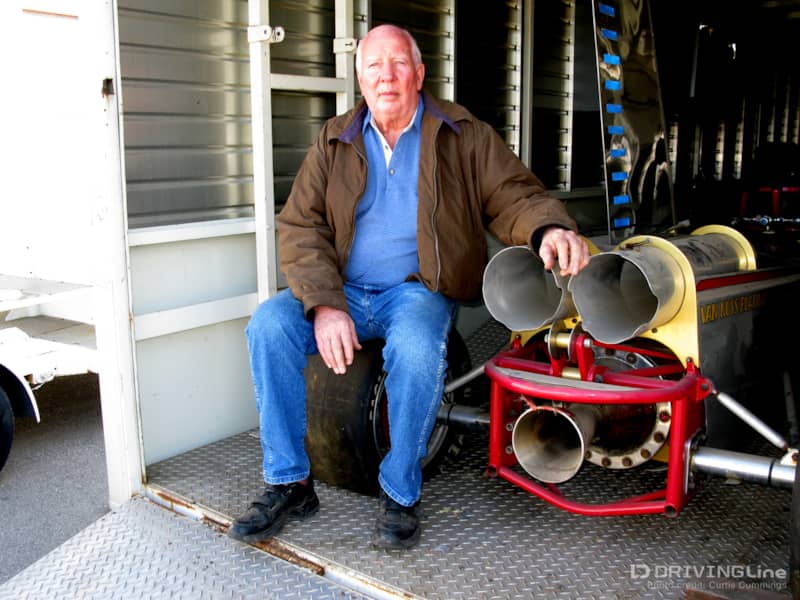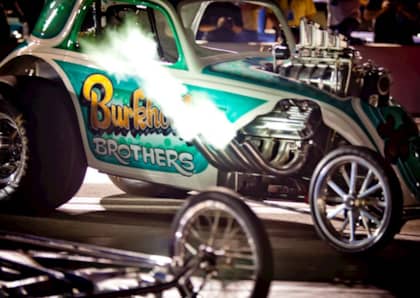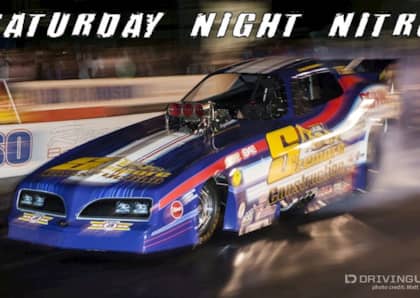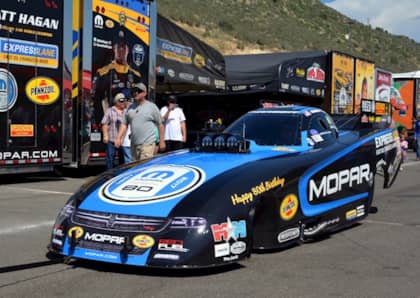Continued Story of a Legend: Fearless Fred Goeske
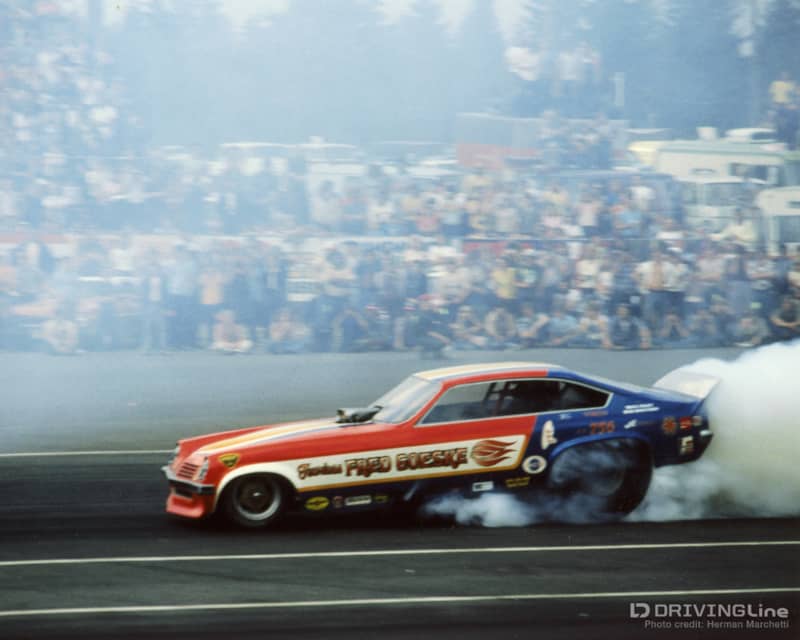
Dawning of a New Go-Fast Era
“I just wanted something that went real fast. Something that the crowd likes and that took less maintenance. And the rocket car was it. You just pour fuel in them and you go as fast as you can stand it.” The rocket motors were simple and had few moving parts. You just dumped fuel into a combustion chamber where pure silver screens cause a reaction in the 90% Hydrogen Peroxide fuel. The chemical expansion is instant and insane.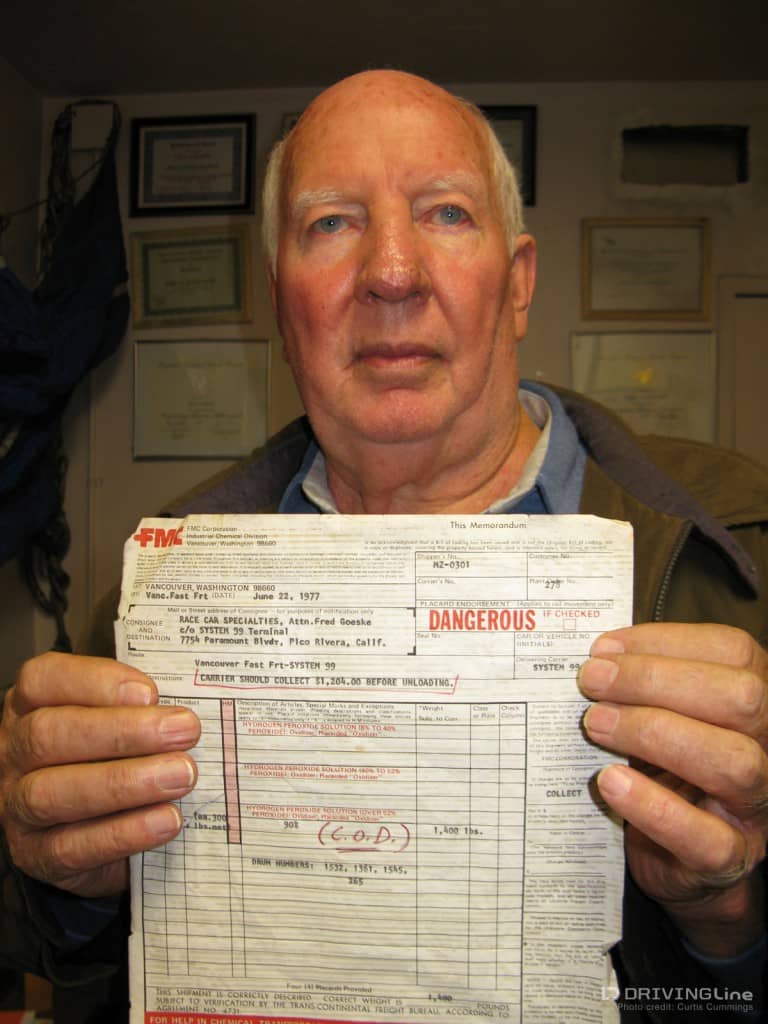
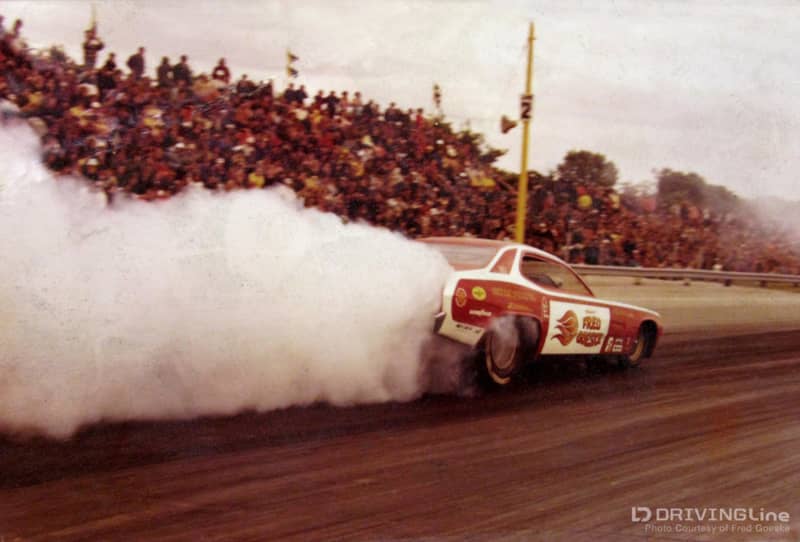
Changing the Tides
In the mid 1970’s, the rocket Funny Cars would tear down the dragstrip sucking the air out of everyone’s lungs as they tripped the lights at 380- 390- 400 mph. Top Fuelers were hitting around 250 and Kenny Bernstein wouldn’t break the 300 mph barrier until 1992. In 1977 Kitty O’Neill hauled a rocket drag car out to Edwards Air Force Base where there was plenty of slow-down room on the long airstrips. She punched the okaythisisjustplainsilly button and fired that car through a 3.22 quarter mile. That’s 412 mph. Thirty six years later, that record stands untouched. “The NHRA gave us rocket guys no respect because we wouldn’t bring in any money from sponsors. We used no motor parts. No oil. None of it. And they hated it that we were so popular with the fans.” The truth is, as much as drag racing officials disliked them, and considered them unsafe and illegitimate - they could absolutely see the attraction value needed to fill the bleachers. By necessity, the rocket cars became the unwanted stepchildren of the NHRA. “None of that bothered me. As long as they paid me to appear every week, I didn’t care what the NHRA thought. One night at OCIR, one of the officials came to me in the pits. I’d really hung it out that night, and the guy says, Fred, you know we have a speed limit of 250 mph for these cars and they clocked you at 380. What gives?” “I just told him that I couldn’t see the speedometer.” Fred’s second career as a rocket car exhibition driver was rolling so strong he bought another car, a well-known Mustang II Funny Car called the Chicago Patrol and converted that one to rocket power as well. “We got a little wild with all of it. I bought a rocket go-cart. I wanted to try it out so we blocked off an alley in Tarzana. I lit it off and I think I did about 180 mph in that alley.” The exhibition work was steady and paying, Fearless Fred being in demand at drag meets all over the country. “Joe Pisano didn’t like exhibition cars. But he told me that I was the only one he’d come to see. He said ‘Fred, all cars leave the starting line at zero. Yours is the only one that leaves the line at 200.”Big Trouble on the Dragstrip
Then came the Spokane crash. Set up on the starting line, Fred listened to the countdown. The crowd were on their feet calling out the numbers with the announcer. Fred dug his helmet in and popped the cork on his Monza- bodied rocket ship and hurtled down the strip at (literally for Fred) blinding speed. He flew past the finish and popped the chutes. That’s when the exhibition went bad in a hurry. “The wind blast somehow made one of the chutes get wrapped around the right rear tire. I don’t know how.” The car pulled hard to the right. Fearless Fred went over an embankment and crashed hard at roughly 275 miles an hour. “I do remember thinking to myself- I sure wish I wasn’t here right now.” The car was obliterated. Fred came to a rest in a nearby field and would be picked up by safety crews. Incredibly, he survived- busted up badly, but without life-threatening injuries. “The only thing left was pretty much just me and the seat. I was very fortunate.” Fred’s Spokane crash stands as one of the fastest wrecks ever survived. The NHRA, fearing insurance problems, would eventually ban rockets altogether after a series of driver fatalities. The rocket cars stand to this day as the fastest vehicles to ever hit a dragstrip.Long Kept Treasures
“Hey, let’s go out back. I want to show you something.” We walk past rows of shipping containers filled with WWII surplus aviation fasteners. He tells me he picked up all this cheap and sells a lot of it online. We stop at an anonymous beige container. He swings open the metal door. “You know, very few people have ever seen this car.” Packed in the cluttered container is a dusty red 1980 Plymouth Arrow pickup truck, looking deceptively stock. Except of course for the polished 3500 lb thrust rocket engine and Hydrogen Peroxide fuel tanks mounted neatly in the truckbed. I peek into the cab. It looks like a typical AM radio plastic craptastic interior from that era. But there is a full roll cage and some strange levers and knobs sticking up from between the seats. The stock four banger still sits under the hood. “The rearend has air actuators that will pull the axels out of the drive hubs. Controlled from the cab. So when you light that thing off you won’t be pullin’ a driveshaft.” The old rocket racer’s voice raises a little bit and his words have sped up. It’s clear that he is still excited by the thought of this lunatic red truck out on the highway. “You can drive it down the road. It’s registered and street legal.” He studies every dusty contour of the little red pickup. The old drag king is quiet, lost in his memories of 400mph blasts down the asphalt quarter. We lean against the little red rocket ship’s tailgate. A rocket nozzle protrudes at about shin level.